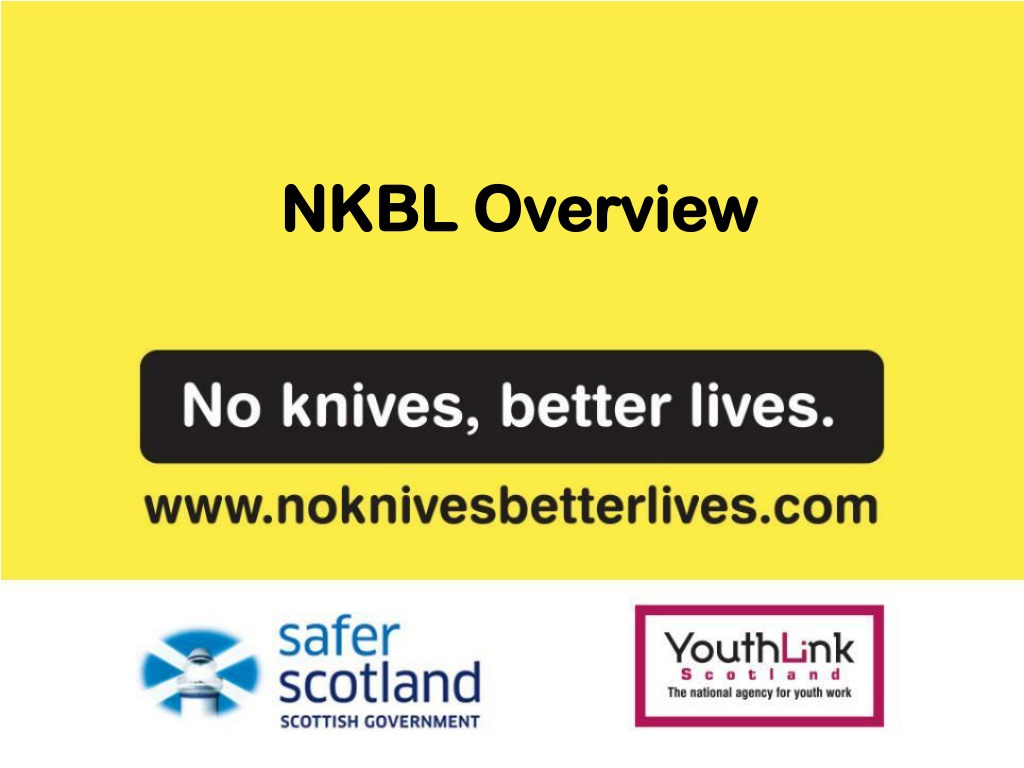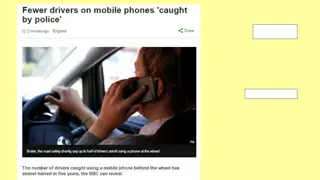Effective Strategies for Preventing Knife Crime Among Young People
Understanding the context of knife crime, the importance of prevention, and the positive approaches taken by programs like No Knives, Better Lives in Scotland. Emphasizing the need for early intervention, support, and education to reduce incidents involving weapons among children and youth. Highlighting the 4 Rs of effective prevention - Risks, Resilience, Reassurance, and Responsibility.
Download Presentation

Please find below an Image/Link to download the presentation.
The content on the website is provided AS IS for your information and personal use only. It may not be sold, licensed, or shared on other websites without obtaining consent from the author. Download presentation by click this link. If you encounter any issues during the download, it is possible that the publisher has removed the file from their server.
E N D
Presentation Transcript
NKBL Overview NKBL Overview
Relevance? Included, Engaged and Involved, Part 2 Section 6 - Prevention, Early Intervention and Staged Intervention Managing Incidents Involving Weapons
Relevance? Schools should consider how children and young people can be supported to develop safe and responsible attitudes, including understanding the risks and dangers that can arise from a carrying a weapon and by being encouraged to speak to an adult if they suspect that someone has a weapon
No Knives, Better Lives Scottish Government programme Aims to prevent knife carrying amongst young people in Scotland National capacity building programme Primary prevention
Knife Crime The Context Violent crime at lowest level in 42 years (6% increase in 16/17) 68% decrease in recorded crimes of handling an offensive weapon despite since 06/07 ( inc.5% increase in 16/17) Number of young people (under 18) convicted of handling an offensive weapon fell by 81% between 06/07 and 15/16 (inc. 1% increase 16/17)
What is the Need? Prevention doesn t require a crisis context Cyclical nature of issue Statistics don t give the full picture One incident is one too many Responsibility to young people
Positive Prevention What is it we want young people to do? How do we best support them? What do young people need to overcome in order to make positive choices? How do we best support them?
The 4 Rs of Effective Prevention - Risks and consequences - Resilience - Reassurance - Responsibility/reporting
Risks and Consequences Ensuring young people are aware of the legal risks and consequences of carrying a knife
Risks and Consequences Evidence suggests that young people often have a poor understanding of legal risks and consequences
Risks and Consequences Personal risks and consequences because young people told us that the most effective deterrent messages highlight impact on family
The 4 Rs of Effective Prevention - Risks and consequences - Resilience - Reassurance - Responsibility/reporting
Resilience Supporting young people to reflect on and develop strategies for dealing with the influences and pressures that might lead to the decision to carry a knife
The 4 Rs of Effective Prevention - Risks and consequences - Resilience - Reassurance - Responsibility/reporting
The 4 Rs of Effective Prevention - Risks and consequences - Resilience - Reassurance - Responsibility/reporting
Support? Training Resources Website Social media Play (2018/19) Bespoke advice

























